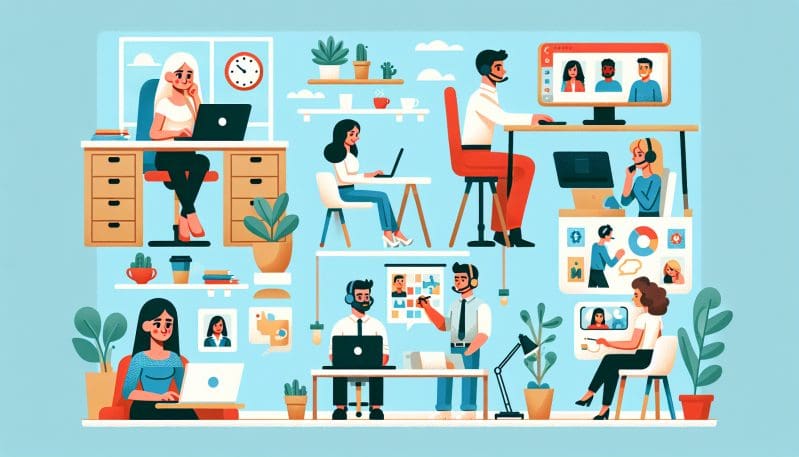The Future of Flexibility: Cultivating Inclusive Workplaces Beyond the 9-to-5 Paradigm
- Home
- The Future of Flexibility: Cultivating Inclusive Workplaces Beyond the 9-to-5 Paradigm
- Editors Desk
- February 21, 2024
- 0 Comments
The world of work is at a crossroads. The 9-to-5 workday, long considered the cornerstone of the traditional workplace, is undergoing a transformation. This seismic shift presents an opportunity to reimagine not just when and where we work, but how we can foster an environment that embraces diversity and inclusion. At No Worker Left Behind, we are at the forefront of championing this evolution towards a more adaptable and equitable future of work.
The concept of workplace flexibility is not new, but its adoption has accelerated in recent years, propelled by technology advancements and a workforce increasingly seeking balance and autonomy. As we embrace this changing landscape, it’s crucial to recognize that flexibility can serve as a powerful tool in promoting inclusion.
Workplace flexibility can take many forms: remote work, flexible schedules, job sharing, compressed workweeks, and more. Each of these models breaks away from the rigidity of traditional work hours, offering employees the ability to shape their work life in a way that fits their personal circumstances.
Consider the parent who juggles childcare responsibilities, the student who pursues further education alongside a career, or the individual managing a chronic illness; flexible work models can be life-changing. They offer the chance for a more diverse group of individuals to participate in the workforce on their terms, without having to fit into a one-size-fits-all schedule that may inadvertently exclude or disadvantage them.
Innovative companies are leading the charge, exemplifying how flexible work arrangements can drive inclusiveness. For instance, a tech startup might operate with a fully remote team, allowing it to recruit talent from across the globe, increasing cultural diversity and providing opportunities to those in regions with fewer local jobs. Another example could be a professional services firm offering staggered schedules that enable team members to avoid peak commuting times or to work during hours that align with their peak productivity.
The benefits of these flexible approaches are manifold: increased employee satisfaction, retention, and well-being; access to a wider talent pool; and the fostering of a more inclusive culture. However, these models come with challenges. There’s the potential for miscommunication in a remote setting, the need for robust technology infrastructure, and the risk of creating a divide between those who can and cannot work flexibly.
As we consider the long-term effects on workforce dynamics, it’s clear that embracing flexibility requires us to rethink not just workplace logistics, but also the underlying principles of work culture. It asks us to prioritize outcomes over hours logged, to trust in the productivity of our employees irrespective of their physical location, and to remain vigilant in ensuring that flexibility does not become a privilege for the few, but a standard for the many.
At No Worker Left Behind, we understand that the integration of flexibility into the workplace is indicative of a broader commitment to inclusion. By building supportive structures and policies that enable all workers to thrive, we are not just responding to a trend, but actively shaping a future where work is more human-centered and accessible to all, regardless of their background or circumstances.
Join us as we delve into this critical conversation about the intersection of flexibility and inclusivity. Together, we can unravel traditional constraints and lay the groundwork for an innovative, diverse, and dynamic workforce that leaves no worker behind.


Leave A Comment